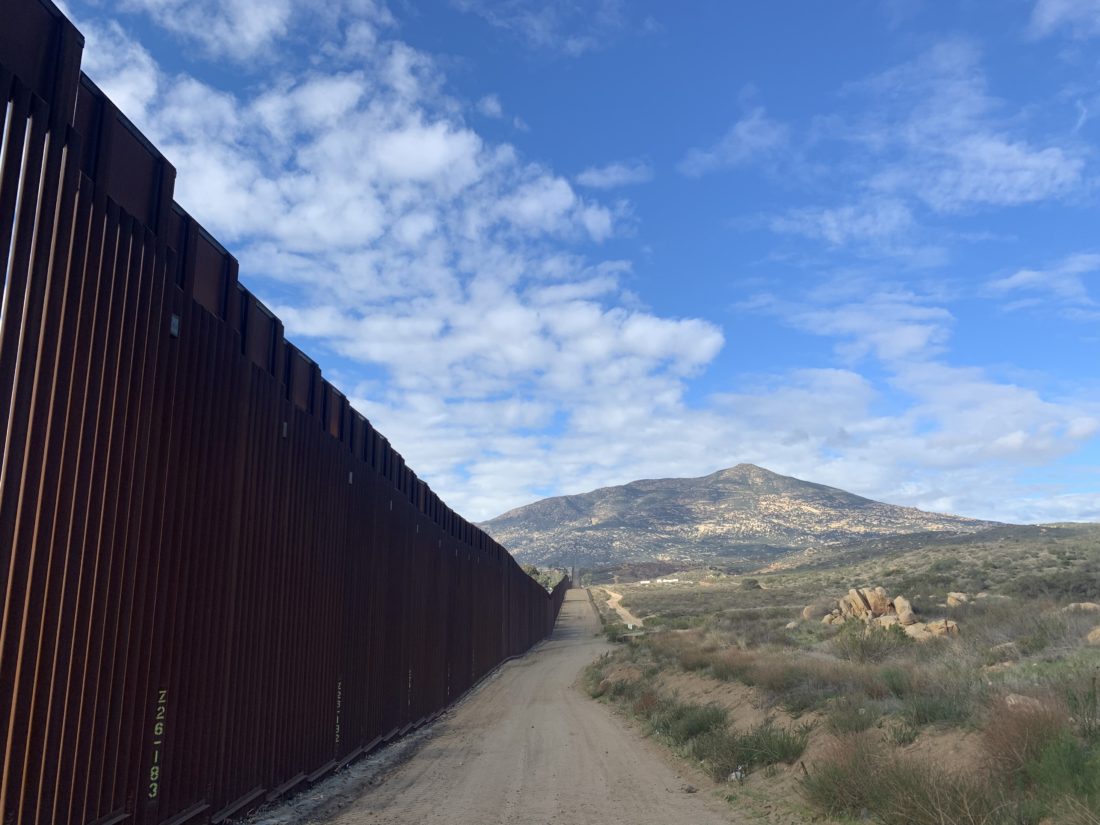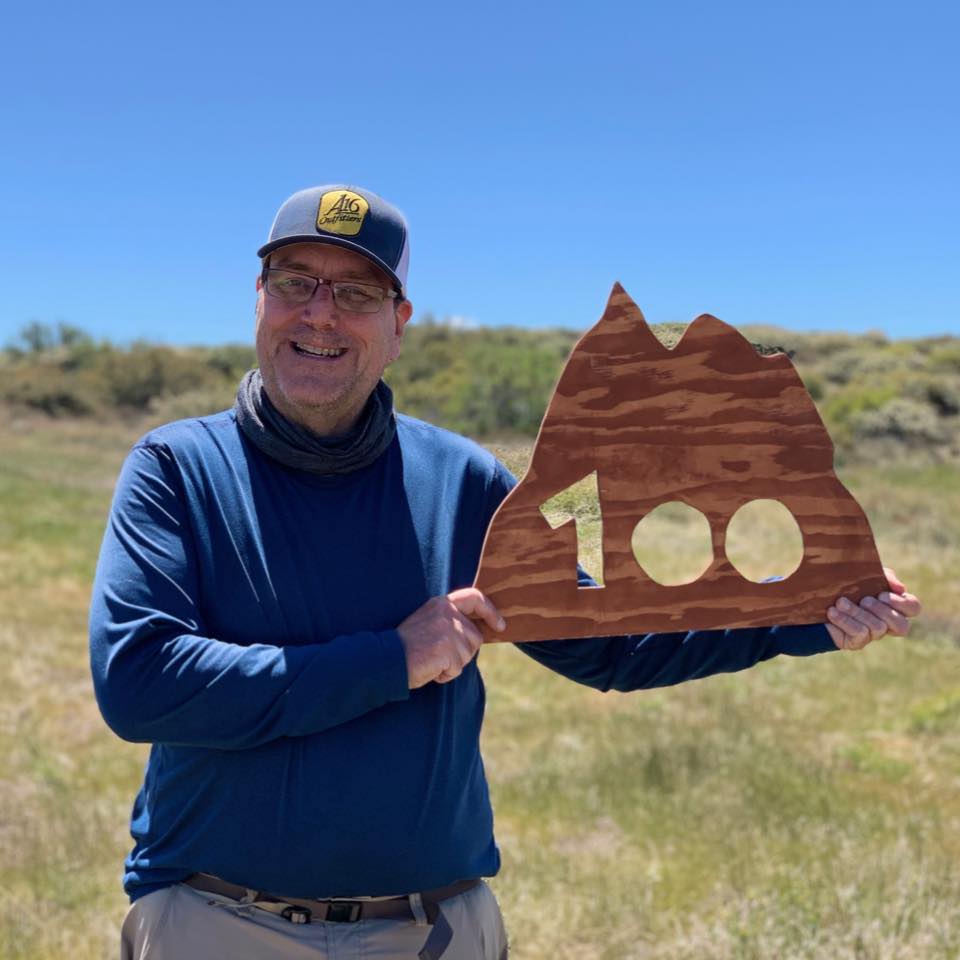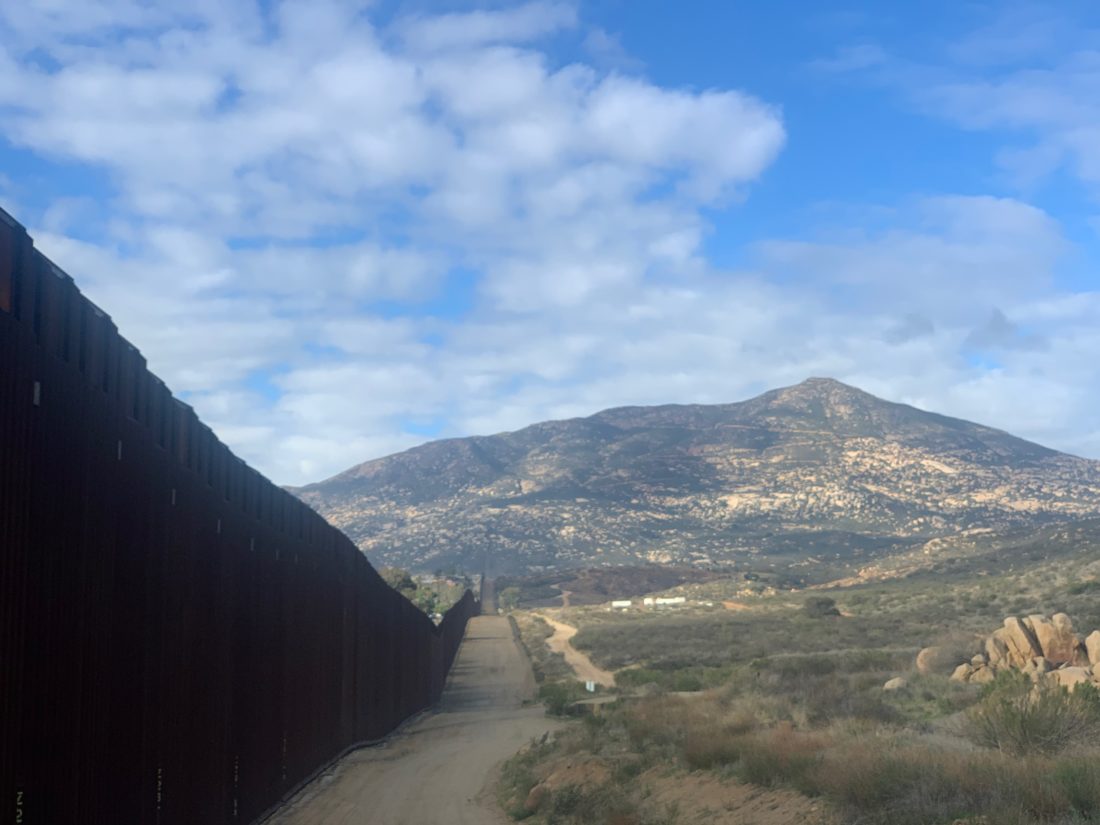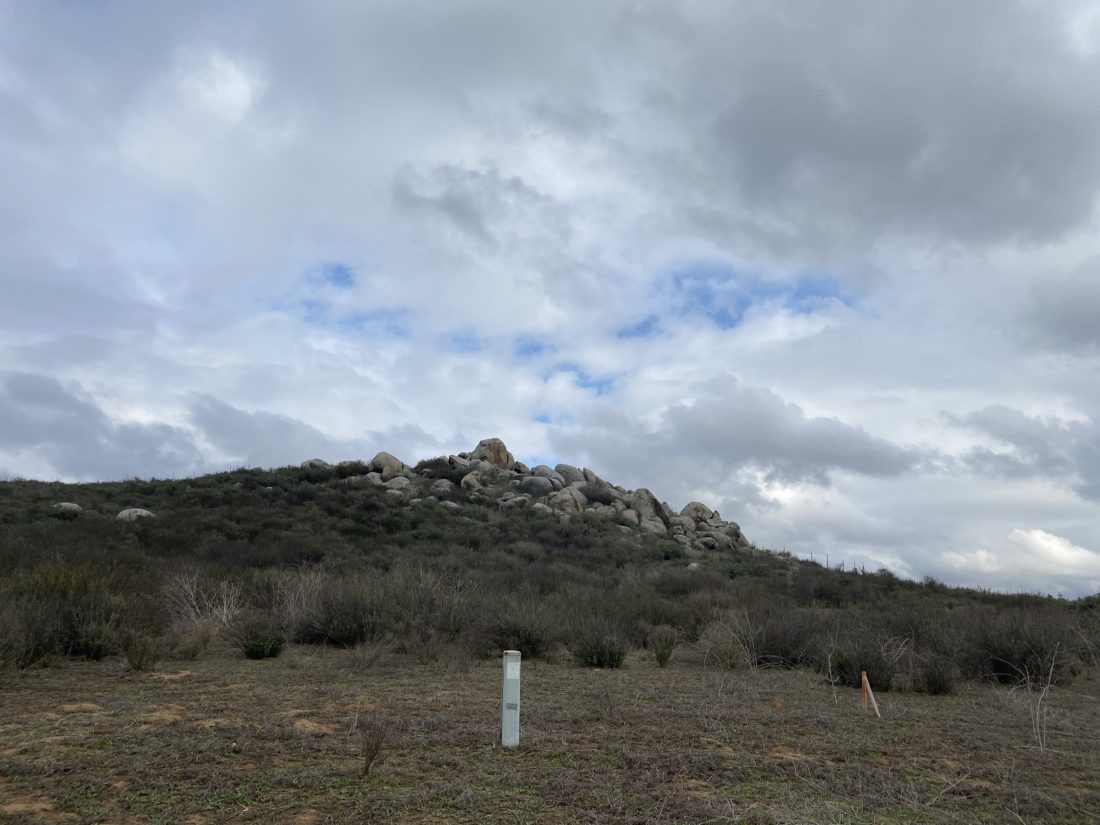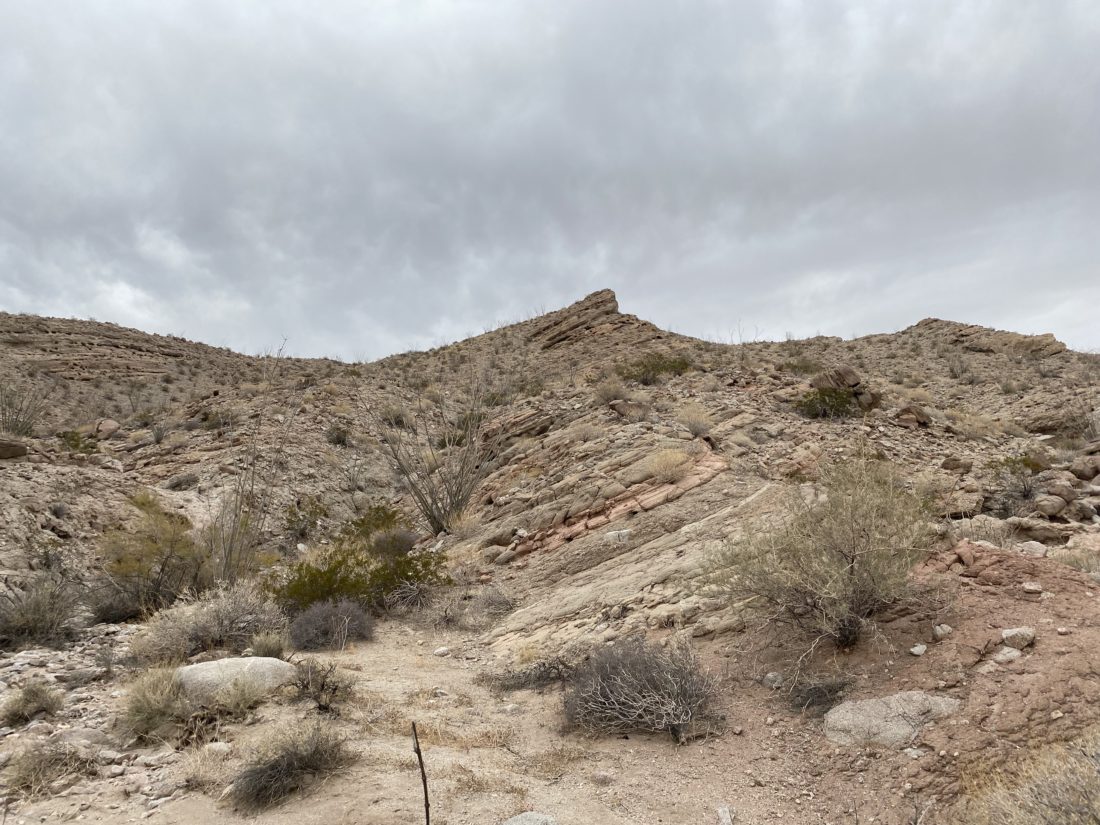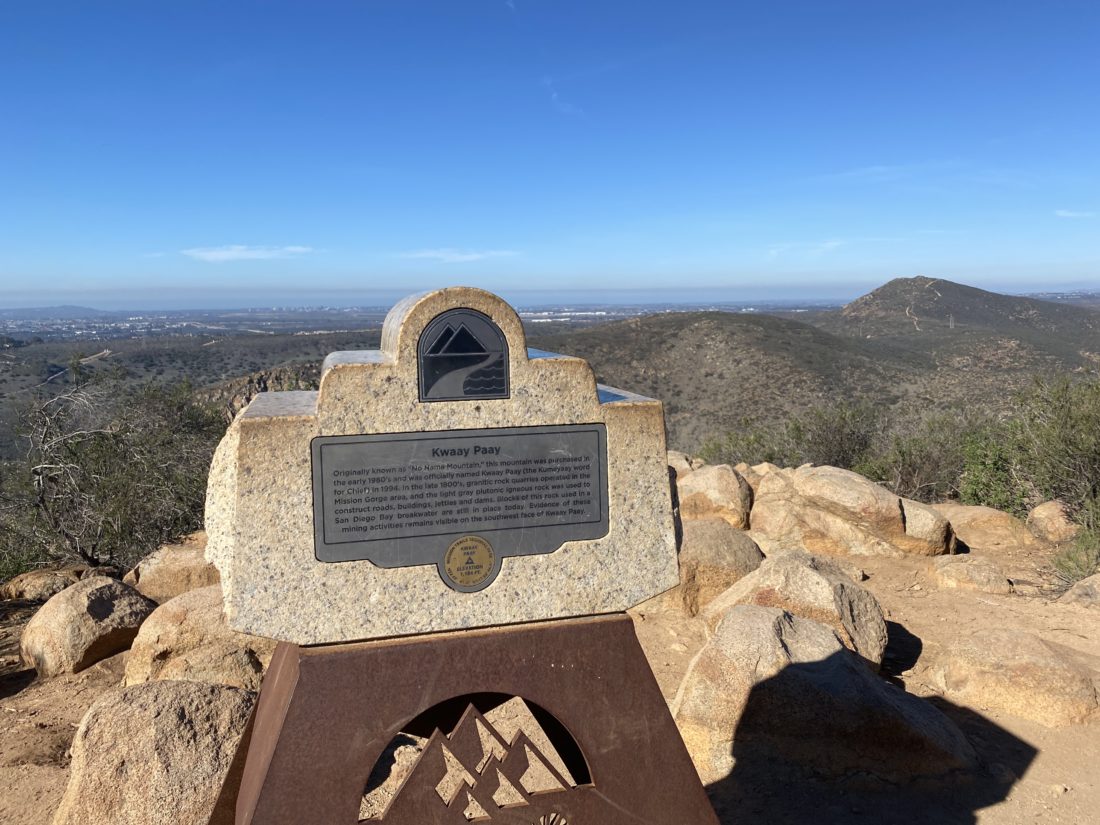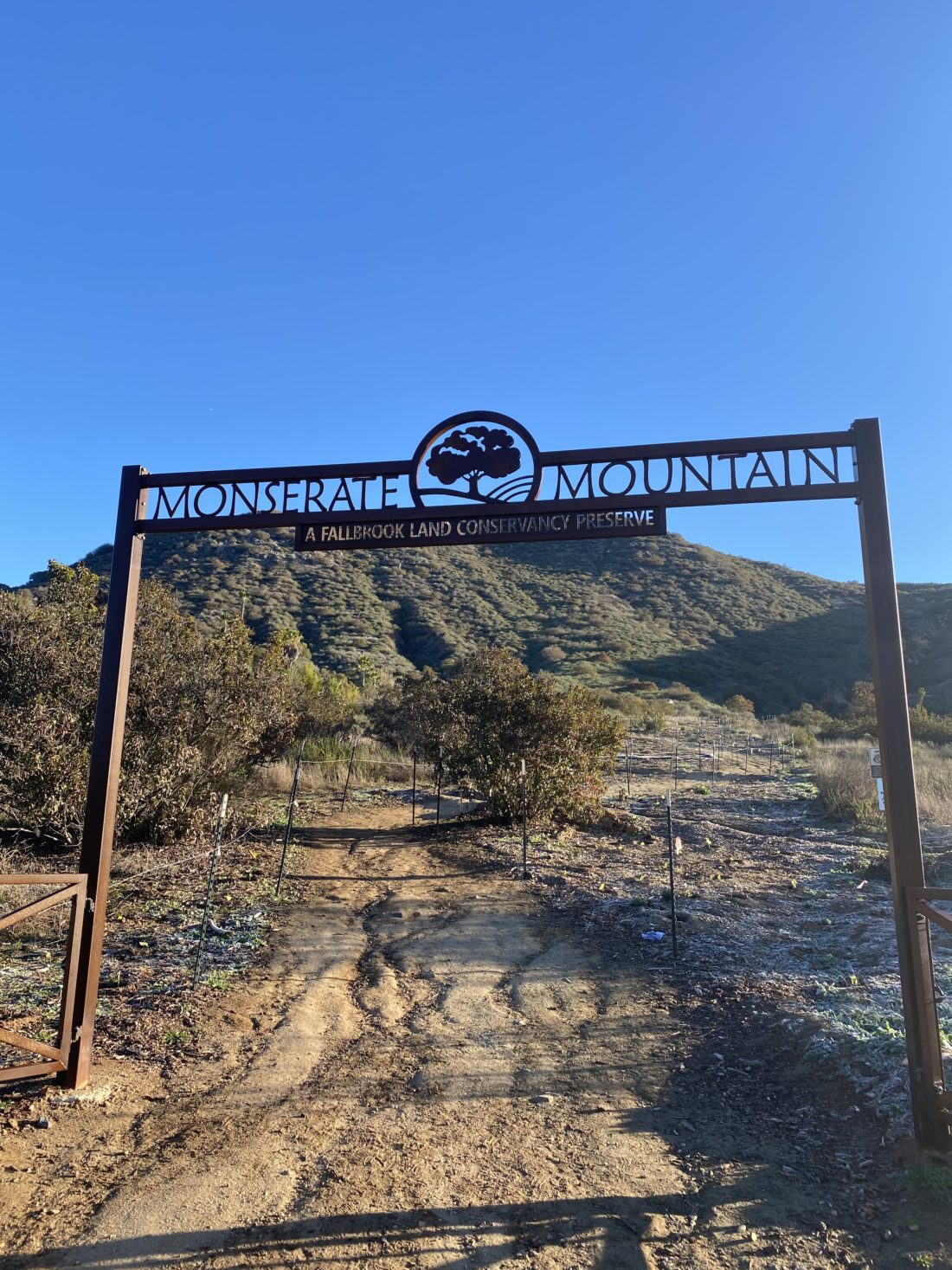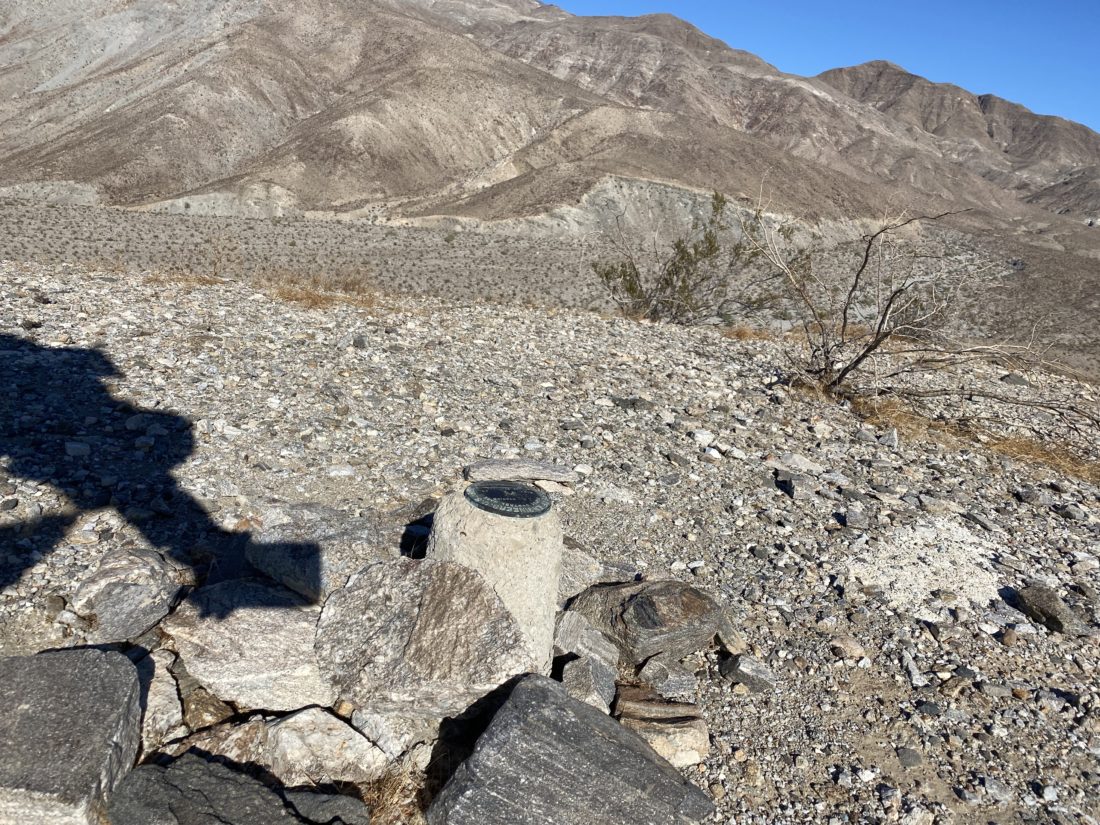Two of the peaks that Susie needed to summit in her quest to complete the San Diego Sierra Club 100 Peak list are Otay Mountain and Tecate Peak. Both of these peaks are hiked by following an active dirt road to their respective summits, something neither of us enjoy hiking. So instead I offered to drive us up both peaks. I had done this not too long ago with Ted Markus, but Susie was out of town at that time. We began with Otay Mountain. Starting from the RV park, I drove up the long dirt road to the summit. Partway up, I pulled over to let a Border Patrol truck pass. I parked about 1/4 mile before the summit. The skies were very cloudy and we were not going to enjoy anything more than simply crossing this peak off our list. We walked up the road to the cluster of towers, then poked around a bit. We found a reference mark, and I pointed out the new rescue box that had been installed since the last time Susie was here. Once done with the summit, we hopped back in the car and headed down the east side of the mountain.






Partway down, two road signs informed us that the road was closed. What? Thay would have been much more useful to know back at Doghouse Junction. I could see a staging site for the work, as well as a good place to possibly turn around. There was a worker sitting in a truck, so we asked if it was possible to still use the road. She said that while she did not have a radio to talk to the crew, where they were working should allow us to pass by. We thanked her and continued on. Not too much further, we saw the skip loader working. We spoke with another worker who let us squeeze by. I will say, the road is in great shape. Continuing on down, we spotted more Border Patrol just as they were escorting migrants up to the road. A bit past that bit of excitement, a cluster of campers were scattered about. The biggest shock was yet to come. While two of the vehicles that were involved with the migrants passed us, we soon came upon a new Mercedes sedan driving very slowly down the road. Now the road isn’t horrible, but I don’t think I would want to take a sedan on it. Susie and I looked at each other with so many questions…
I am an avid peak bagger, sometimes backpacker, and former sea kayaker living in San Diego. I am the co-author of Urban Trails:San Diego, coming in Spring 2026!
In 2019, I became the third person to complete the San Diego 100 Peak Challenge. Not stopping with that accomplishment, I set my sights on the harder San Diego Sierra Club 100 Peak list, which I completed in 2021. In addition, I have conquered several Six-Pack of Peaks challenges (SoCal, San Diego, Central Coast, and both the Arizona-Winter and Arizona-Summer). I am looking forward to exploring new summits and new adventures across the southwest.
